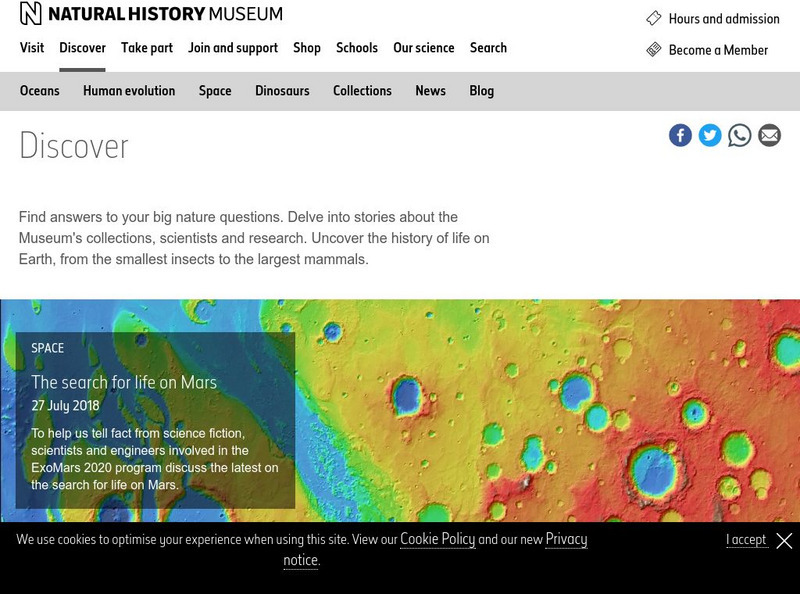Information is Beautiful
How Many Gigatons of Carbon Dioxide...?
Here is an interesting infographic that presents information on the amount of carbon dioxide we can safely release into the atmosphere compared to the actual amount we have released to date.
It's About Time
Paleoclimates
How do scientists know what the Earth was like in the past? This second installment of a six-part series focuses on paleoclimates and provides an overview of how geologists determine information about past climates using fossil...
Re Energy
Build Your Own Biogas Generator
What is biogas and how is it made? After examining background information about the sources of biogas and biogas generators, class members follow the provided information and build a biogas generator that can be used in the...
Natural History Museum
Natural History Museum: Types of Fossils
This particular site is part of a larger online exhibit from the Natural History Museum covering various aspects of fossils and fossil research. Here, seven types of fossils are listed and each type is given a picture representation.
Science Struck
Science Struck: The Meaning of Index Fossils Explained
Explains the importance of index fossils for the dating and chronology of events in the fossil and geological records. Discusses uses and examples of index fossils in the Cenozoic, Mesozoic, and Paleozoic Eras.
Science Struck
Science Struck: Types of Fossils
Describes four different kinds of fossils and how they form.
PBS
Pbs Learning Media: Riddle of the Bones
At the online companion Web site of "Evolution," the seven-episode series on PBS, piece together clues to how one of our early ancestors looked as you examine images from four significant fossil finds of Australopithecus afarensis.
Canadian Museum of Nature
Canadian Museum of Nature: Dinosaurs: Archaeopteryx Lithographica
Is it a feathered dinosaur, or the ancestor of birds? Find out about the Archaeopteryx lithographica whose fossil remains show feathers similar to that of a bird, and whose skeleton resembles that of a dinosaur.
Carnegie Museum of Natural History
Carnegie Museum of Natural History: Carnegie's Dinosaurs: Oviraptorosaur
Discover the Oviraptorosaur in this impressive field guide presented by the Carnegie Museum of Natural History.
San Diego Zoo Global
San Diego Zoo: West African Lungfish
This excellent resource from the San Diego Zoo presents extensive information on West African lungfish including details about their habitat, physical characteristics, size, diet, family life, conservation status, and fun facts.
Sophia Learning
Sophia: Geology: Crystals: Lesson 2
This lesson will present how to identify and classify crystals. It is 2 of 3 in the series titled "Geology: Crystals."
Science Struck
Science Struck: What Are Stromatolites and How Do They Form?
Explains what stromatolites are, their formation from colonies of cyanobacteria, their evolutionary importance, and where they can be found living today. Thrombolites are similar to stromatolites but form differently. They can also still...
eSchool Today
E School Today: Non Renewable Energy
Learn what non-renewable energy is and the different types.
Sophia Learning
Sophia: Geology: Crystals: Lesson 3
This lesson will present how to identify and classify crystals. It is 3 of 3 in the series titled "Geology: Crystals."
Sophia Learning
Sophia: Geology: Igneous Rocks: Lesson 2
This lesson will present how to identify and classify igneous rocks. It is 2 of 3 in the series titled "Geology: Igneous Rocks."











